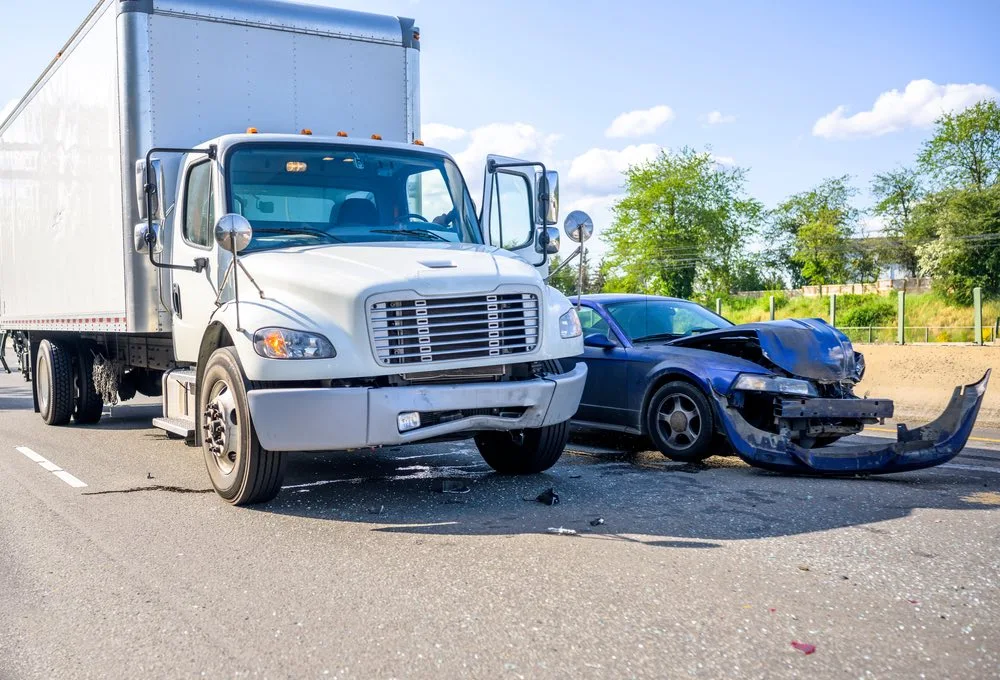Navigating the Process of Settling Property Damage Claims Successfully
If you’re dealing with property damage, you likely have one pressing question: How do I settle my property damage claim effectively? This article goes straight to the heart of that question, offering a concise guide on settling property damage claims that leads you through each stage of claiming compensation for damage to your property. From documenting the damage to negotiating with insurance adjusters, we provide direct, actionable insights to help you secure a fair settlement. Expect to learn about the process without getting mired in complexity, ensuring you’re prepared to advocate for your interests with clarity.
Key Takeaways
- Understanding the property damage claim process is crucial for a successful outcome, and involves reporting the incident, gathering evidence, and negotiating with insurance companies.
- There are various types of property damage claims including vehicle damage, personal property damage, and real property damage, each requiring specific evidence and negotiation strategies.
- Challenges in settling claims can include disputes over repair costs, bad faith practices by insurance companies, and time limit constraints, which may necessitate the involvement of a professional attorney.
Understanding the Property Damage Claim Process

If your property, be it your car, personal belongings, or home gets damaged, filing a property damage claim with your insurance company should be your initial response. A property damage claim involves seeking compensation for financial losses caused by damage to your property. This can be due to various factors such as a car accident or natural disasters. It is possible for you to seek compensation from your own insurance company for property damage caused by another party. This can help cover the costs of repairing the damage. But, what makes comprehending the process so significant?
Grasping the property damage claim process is vital since it can directly determine your claim’s result. It involves three important steps: reporting the incident, gathering evidence, and negotiating with insurance companies. Each step requires careful attention and strategic decision-making to ensure that you get a fair settlement for your claim. In the ensuing sections, we will explore each of these steps in more detail, imparting practical advice on how to maneuver the process successfully.
Reporting the Incident
Confronted with property damage, you might initially react with panic or confusion. Although these feelings are understandable, it is vital to act swiftly and report the incident to your insurance company. But, what makes prompt reporting so significant?
Promptly reporting an incident jumpstarts the claim process. It’s the first and most crucial step in initiating a claim. Reporting the incident promptly to your insurance company helps avoid the need for a civil lawsuit and can expedite the claim process. Moreover, it allows your insurer to:
- investigate the incident while the evidence is still fresh
- gather any necessary documentation or witness statements
- assess the extent of the damage or injuries
- determine the coverage and benefits available to you
This increases the likelihood of a successful claim and ensures that you recover compensation you are entitled to in a timely manner.
It’s worth noting that the typical timeframe for reporting a property damage incident is two years from the date of the incident. However, the sooner you report it, the better.
Gathering Evidence
After reporting the incident, the next step is to gather evidence. This can be a daunting task, especially if you’re dealing with significant property damage. Nonetheless, the significance of collecting evidence is indispensable.
Evidence like photos, receipts, and witness statements can significantly strengthen your claim. These forms of evidence provide concrete proof of the damage done to your property. For example:
- Photos and videos document the extent of the damage
- Receipts can serve as proof of the value of damaged or stolen items
- Witness statements can corroborate your account of the incident and help establish fault

Therefore, it’s crucial to collect as much evidence as possible to support your claim and increase the likelihood of a favorable outcome.
Negotiating with Insurance Companies
The final step in the property damage claim process is negotiating with the insurance company. This stage can prove difficult, particularly if you’re not well-versed in the complexities of insurance policies and the negotiation process. But, with the right preparation and strategy, you can effectively negotiate a fair settlement.
One of the key strategies for effective negotiation is to thoroughly understand your insurance policy and its coverage. This includes understanding the policy limits, coverage options, and the terms and conditions of your policy. It’s also crucial to gather all pertinent information and evidence to strengthen your claim.
If you’re presented with a low settlement offer, don’t hesitate to reject it and make a counteroffer. Remember, you don’t have to accept the first offer you get. If necessary, consider seeking the guidance of a qualified attorney to help you navigate the negotiation process.
Types of Property Damage Claims
Having covered the general process of filing a property damage claim, let’s explore the various kinds of property damage claims. Property damage claims can be categorized into three main types: vehicle damage, personal property damage, and real property damage.
Each type of claim has its own unique characteristics and requires different types of evidence and approaches to successfully negotiate a settlement. It’s important to understand the differences between these types of claims, as it can directly impact the amount of compensation you can receive. In the subsequent sections, we will examine each claim type in more depth, offering you practical advice on managing each one.

Vehicle Damage
Vehicle damage claims are common, especially if you’ve been involved in a car accident. The claim generally encompasses the costs associated with repairing the vehicle to its pre-damaged state, which may involve part replacements and labor expenses.
When filing a vehicle damage claim, it’s important to assess the full extent of the damage. This includes not only the visible damage to the bodywork and paint job, but also any structural damage that may have occurred. Furthermore, it’s important to determine the “diminished value” of your vehicle – the decrease in its market value after the repairs have been made.
This can be a complex process requiring detailed knowledge of the local used car market and the specifics of your vehicle, such as its age, mileage, and overall condition.

Personal Property Damage
Personal property damage claims encompass a range of items including furniture, clothing, and personal belongings within a vehicle that have been affected by an accident. When filing a personal property damage claim, it’s crucial to document the damaged items thoroughly and provide proof of ownership.
To determine the value of the damaged items, a comprehensive assessment is carried out. This takes into account policy limits and the type of coverage, whether it’s replacement cost value (RCV) or actual cash value (ACV). Remember, having a detailed inventory of the damaged items and supporting documents like receipts can significantly bolster your claim.
Real Property Damage
Real property damage claims encompass harm or injury inflicted upon real estate or improvements to property, such as property damages to property owners’:
- Buildings
- Land
- Structures
- Other immovable property
In addition to property damage, these claims may also involve physical injuries sustained by individuals during the incident.
These types of claims can be quite complex, as they involve assessing the extent of damage to these properties.
The process for assessing real property damage involves documenting the damage through photographs and videos captured from different angles and distances, and maintaining records of any immediate repairs or actions taken to mitigate further damage. Furthermore, the compensation is determined by assessing the cost of repairing or replacing the damaged property. If the cost of repair exceeds the property’s value, the insurer may consider it a total loss and offer payment equal to the property’s fair market value for replacement.
Navigating Insurance Policy Limits and Coverage
While you’re maneuvering the process of filing a property damage claim, understanding your insurance policy limits and coverage is vital. These terms refer to the maximum amount your insurer is responsible for, and what types of damages are covered by your policy.
Understanding these limits and coverage options can help you make informed decisions about your claim and avoid unexpected financial obligations. Furthermore, it’s also important to know how to handle underinsured or uninsured claims, where the party responsible for the damage has insufficient or no insurance coverage.
In the upcoming sections, we’ll examine each of these facets more thoroughly.
Policy Limits
Policy limits refer to the maximum amount that an insurer is accountable for paying for damages covered by a policy. For example, if your policy limit is $25,000, this is the maximum amount your insurer will cover for a claim. If the damages exceed this amount, you would be responsible for paying the difference.
Understanding policy limits is crucial as they can directly impact the amount of compensation you can receive for your claim. Therefore, it’s important to review your policy thoroughly and understand the limits before filing a claim. If you’re unsure about your policy limits, consider seeking the help of a legal professional.
Coverage Options
Coverage options in property damage insurance policies can vary greatly, and it’s crucial to understand what is covered by your policy. Coverage options can include basic form policies that provide coverage for damage caused by natural disasters, personal property coverage, and auto insurance coverage options.
Understanding your coverage options can help you identify all potential sources of compensation and present a stronger case for your claim. If you’re unsure about your coverage options, consider seeking the help of a legal professional. They can help you understand your policy and guide you through the claim process.
Handling Underinsured or Uninsured Claims
In some cases, you may find yourself dealing with an underinsured or uninsured claim. This occurs when the party responsible for the damage has insufficient or no insurance coverage. In these situations, handling the claim can be more complex, but there are strategies you can use to secure compensation.
If you find yourself in this situation, you can pursue compensation by submitting a claim to your own insurance provider, provided that your auto policy includes uninsured/underinsured motorist coverage. Additionally, there may be alternative sources of compensation available, such as public funding for uncompensated care or manufacturer assistance programs for uninsured individuals.
The Role of Attorneys in Settling Property Damage Claims
Although you can manage a property damage claim independently, enlisting the help of an attorney can be incredibly advantageous. Attorneys play a crucial role in the settlement of property damage claims by offering legal expertise, leveraging negotiation skills, and striving to secure the maximum compensation for their clients.
Whether your claim is straightforward or complex, an attorney can help you navigate the legal landscape, effectively negotiate with insurance companies, and ensure your rights are protected. In the ensuing sections, we’ll look at the different ways attorneys can aid in settling property damage claims.

Legal Expertise
Legal expertise is essential when dealing with property damage claims. An attorney can provide guidance on the legal aspects of the claim process, helping you understand your legal rights and obligations.
Additionally, an attorney can help you with the following:
- Navigate the complexities of insurance law and relevant legal statutes
- Gather essential evidence for your case
- Provide strategic advice on how to present your claim effectively
- Enhance the likelihood of securing coverage for losses
- Obtain fair compensation
With their legal knowledge and expertise, attorneys can significantly enhance the likelihood of securing coverage for losses and obtaining fair compensation. To get started, take advantage of a free consultation.
Negotiation Skills
Negotiation is a key part of the claim process, and having strong negotiation skills can directly impact the outcome of your claim. Attorneys are skilled negotiators who can effectively advocate for your rights and work towards a fair settlement.
From assessing insurance offers against estimates to pinpointing opportunities for securing a more favorable settlement, an attorney’s negotiation skills can be invaluable. Furthermore, an attorney can help you formulate a strong demand letter backed by evidence, which can significantly influence the negotiation process and its ultimate outcome.
Maximizing Compensation
One of the main goals of any property damage claim is to secure the highest possible compensation for your loss. Attorneys play a crucial role in this aspect as they strive to maximize the compensation for their clients.
From identifying all potential sources of compensation to presenting a comprehensive case for the full extent of damages, an attorney can help you achieve the maximum compensation you are entitled to. In addition, their comprehensive understanding of the legal aspects of property damage claims enables them to accurately assess all potential damages, including economic ones, and empowers them to seek the full compensation you deserve.
Common Challenges and Solutions in Settling Property Damage Claims
Even with careful planning and preparation, challenges may arise during the settlement of a property damage claim. Common challenges include disputes over repair costs, bad faith practices by insurance companies, and time limit constraints.
Understanding these challenges and knowing how to address them can greatly improve your chances of a successful claim. In the subsequent sections, we’ll explore each of these challenges, giving practical advice on how to surmount them and ensure a fair settlement.
Disputes Over Repair Costs
Disputes over repair costs can be a common challenge when settling a property damage claim. These disputes can arise due to differing opinions on the extent of the damage or the cost of repairs.
To resolve these disputes, it’s recommended to:
- Obtain multiple estimates from different repair shops
- Seek the assistance of experts who can offer appraisal services and engage in negotiations with insurance companies
- If disputes still persist, consider seeking the help of a legal professional.
Bad Faith Practices by Insurance Companies
Bad faith practices by insurance companies can greatly hinder the settlement of a property damage claim. These practices can include denying valid claims without proper investigation, delaying claim processing without justification, or undervaluing the damage.
If you suspect that your insurance company is acting in bad faith, it’s crucial to consult with an attorney. A legal professional can review the facts of your case, build a case against the insurance company, and work to secure the rightful compensation for you.
Time Limit Constraints
Finally, time limit constraints can pose a significant challenge when settling a property damage claim. Each state has a statute of limitations for property damage claims, which sets a deadline for filing a claim. If you miss this deadline, you may lose your right to pursue compensation. It’s crucial to be aware of your own deadlines to avoid jeopardizing your claim.
Therefore, it’s crucial to take prompt action and initiate the claim process as soon as possible after the incident occurs.
Summary
In conclusion, navigating the process of settling a property damage claim can be complex, but with the right knowledge and resources, you can successfully navigate this process. From understanding the different types of claims and the role of attorneys to recognizing and overcoming common challenges, this blog post has provided you with a comprehensive guide to settling property damage claims. Remember, when in doubt, don’t hesitate to consult with a legal professional. After all, the ultimate goal is to secure fair compensation for your loss and move forward.
Frequently Asked Questions
How do you negotiate property damage?
When negotiating property damage, provide thorough reasoning, lists, and documentation to support your claim so the insurance company has little choice but to increase its original offer. Negotiate the amount they should pay based on the information you provide.
How do damage claims work?
After filing a claim, your insurance company will assign an adjuster to inspect the damage and decide on coverage and compensation amount. This process typically takes a couple of days.
How do I make the most of my insurance claim?
To make the most of your insurance claim, keep receipts for repairs, wait for the adjuster’s inspection before permanent repairs, negotiate the claim settlement offer, and save receipts for replaced items. Also, file your claim promptly, document the damage, make temporary repairs, and communicate with your adjuster. It’s important to not accept the first offer, seek professional advice, review and ensure accuracy in the claim estimate, and provide proof for arguing the estimate. Lastly, make sure to keep the insurance company informed about matching elements that need replacement.
How long do you have to file a property damage claim in Texas?
You have to file a property damage claim within two years from the date the damage occurred, according to the Texas statute of limitations.
What can I do if someone damaged my property in Texas?
If someone has damaged your property in Texas, you should take immediate action by filing a claim, documenting the damage, and contacting your insurance company to report the incident. It’s crucial to take steps to prevent further damage to your home or property.
